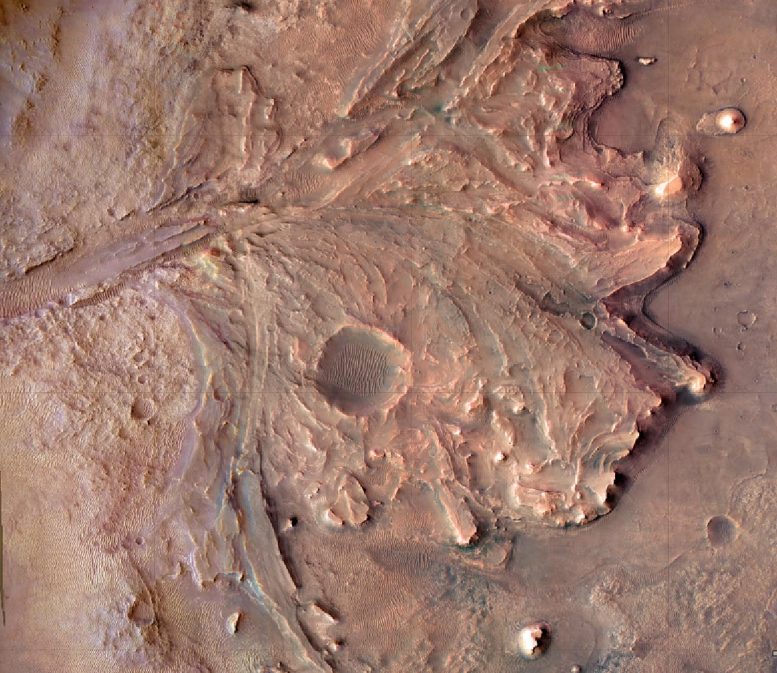
Close-Up of Belva Crater: This image from a map of Jezero Crater shows the area NASA’s Perseverance Mars rover is currently exploring, including Belva Crater, just below the center of the image. Credit: NASA/JPL-Caltech/University of Arizona/USGS-Flagstaff/JHU-APL
Martian maps are full of monikers recognizing places on Earth, explorers, and even cartoon characters.
NASA’s Perseverance rover is currently investigating rock outcrops alongside the rim of Mars’ Belva Crater. Some 2,300 miles (3,700 kilometers) away, NASA’s Curiosity rover recently drilled a sample at a location called “Ubajara.” The crater bears an official name; the drill location is identified by a nickname, hence the quotation marks.
Both names are among thousands applied by NASA missions not just to craters and hills, but also to every boulder, pebble, and rock surface they study.
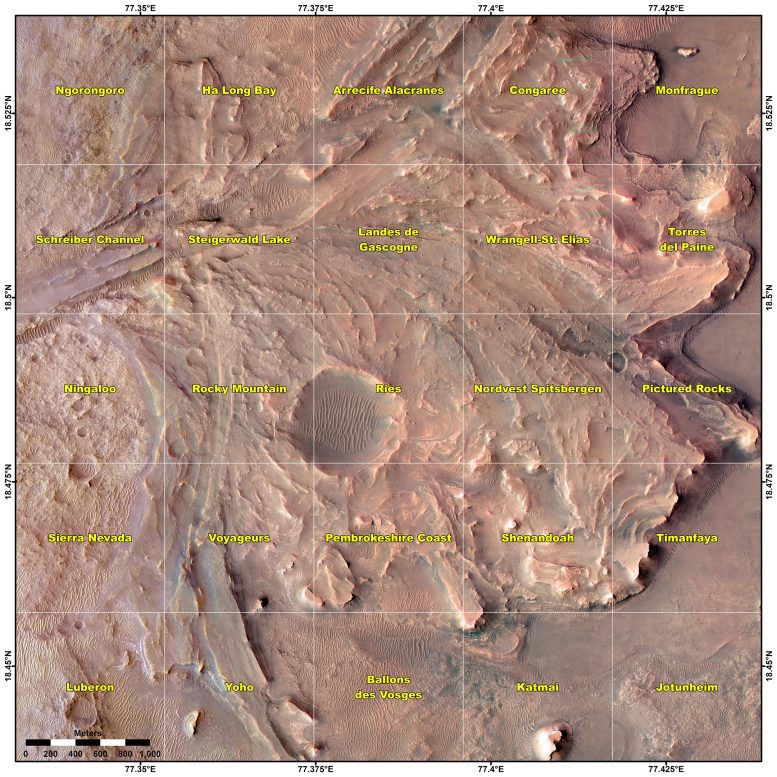
Perseverance’s Quadrant Themes: This map shows various quadrant themes in the vicinity of NASA’s Perseverance Mars rover, which is currently in the Rocky Mountain quadrant within the much broader Jezero Crater. Credit: NASA/JPL-Caltech/University of Arizona
“The No. 1 reason we pick all these names is to help the team keep track of what they’re finding each day,” said Ashwin Vasavada, the Curiosity mission’s project scientist at NASA’s Jet Propulsion Laboratory in Southern California. “Later on, we can refer to the many hills and rocks by name as we discuss them and eventually document our discoveries.”
Just how scientists come up with the identifiers has evolved since the early days, 25 years ago, when they used cartoon character names. Here’s a closer look.
How Does NASA Name Things on Mars?: Learn more about how Mars scientists name the craters, hills, valleys, and rocks on the Red Planet. Credit: NASA/JPL-Caltech
Official Names
The difference between an official name on Mars and an unofficial one is seemingly simple: Official monikers have been approved by a body of scientists known as the International Astronomical Union (IAU). The IAU sets standards for naming planetary features and logs the names in the Gazetteer of Planetary Nomenclature.
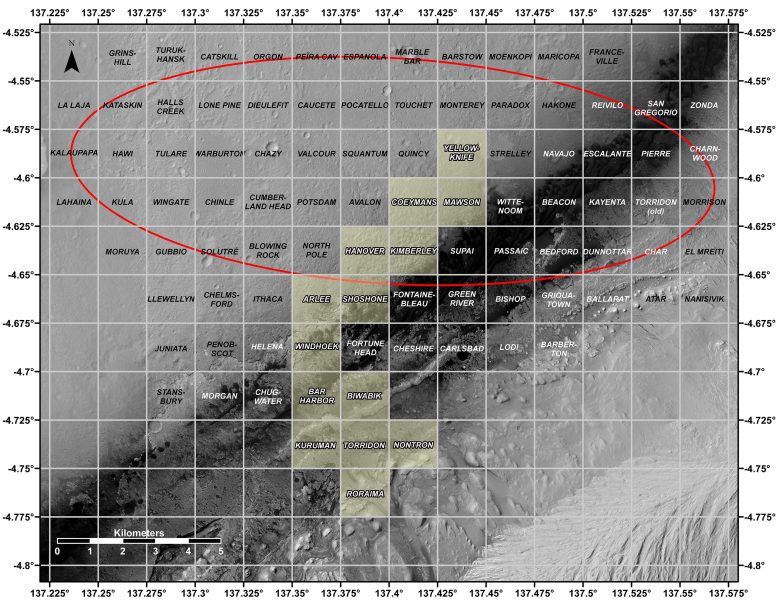
Curiosity’s Quadrant Themes: This map shows all the quadrant themes for NASA’s Curiosity Mars rover, which is currently in the Roraima quadrant seen at the bottom. The red oval indicates the landing ellipse where the rover was targeted to touch down in 2012. The yellow-tinted quadrants are areas the rover has driven through since then. Credits: NASA/JPL-Caltech/USGS-Flagstaff/University of Arizona
For example, craters larger than 37 miles (60 kilometers) are named for famous scientists or science-fiction authors; smaller craters are named after towns with populations of less than 100,000 people. Jezero Crater, which Perseverance has been exploring, shares the name from a Bosnian town; Belva, an impact crater within Jezero, is named after a West Virginia town that is, in turn, named after Belva Lockwood, the suffragist who ran for president in 1884 and 1888.
More than 2,000 locations on Mars bear official names, but even more unofficial nicknames dot the Martian map.
Evolving Nicknames
Early Mars missions sometimes took a whimsical route with nicknames, even using cartoon character names. “Yogi Rock,” “Casper,” and “Scooby-Doo” were among the unofficial names applied by the team behind NASA’s first rover, Sojourner, in the late 1990s.
The philosophy changed with the Spirit and Opportunity rovers, whose teams started using more intentional names. For instance, the Opportunity team nicknamed a crater “Endurance” to honor the ship that carried explorer Ernest Shackleton’s ill-fated expedition to Antarctica. The names for the spots where Curiosity and Perseverance landed honor science-fiction writers Ray Bradbury and Octavia E. Butler, respectively. The InSight team named a rock that had been jostled by the lander’s retrorockets during touchdown “Rolling Stones Rock,” after the band. And the Curiosity team named a Martian hill after their colleague Rafael Navarro-González, who died from COVID-19 complications.
Earth on Mars
Despite occasional exceptions, the Curiosity and Perseverance missions stick to nicknames based on terrestrial locations. Before Curiosity landed in 2012, the rover’s team created a geological map of the landing area. They started by drawing a grid, making squares, or quadrants, equivalent to about 0.7 miles (1.2 kilometers) on each side. These quadrants would be themed around a site of geological significance on Earth.
Then, as now, team members suggested ideas for themes based on sites where they have worked or that they have a personal connection to, and they informally discussed which would be the most interesting to include, keeping in mind that various names would be memorialized in future scientific papers. Once a theme is picked, hundreds of names fitting into that theme are compiled. That many are needed because the available names can dwindle quickly, given that Curiosity may stay in a quadrant for several months.
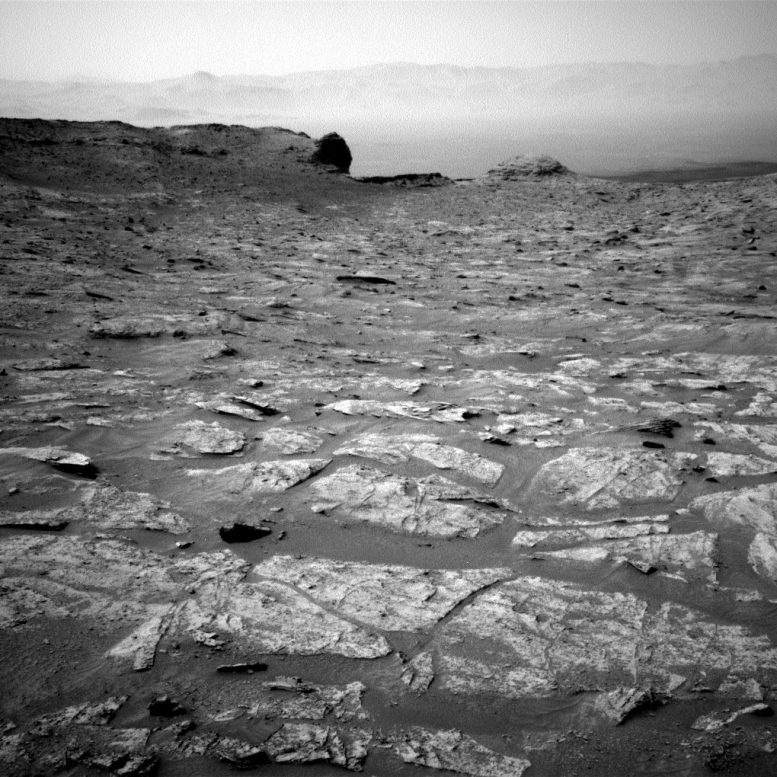
This image was taken by Left Navigation Camera onboard NASA’s Mars rover Curiosity on Sol 3345. Credit: NASA/JPL-Caltech
For Curiosity’s latest quadrant, the rover’s team chose a theme named after Roraima, the northernmost state of Brazil, and for Mount Roraima, the highest peak in the Pacaraima Mountains, located near the border of Venezuela, Brazil, and Guyana. This marked the first South American quadrant theme. The sulfate-enriched region Curiosity is currently exploring, with its flat-topped hills and steep slopes, reminded them of the “tabletop” mountains in the Pacaraima range.
For Perseverance, scientists chose to go with national park themes. The rover is now exploring the Rocky Mountain quadrant and recently drilled into rocks at a location bearing the nickname of Rocky Mountain National Park’s “Powell Peak.”

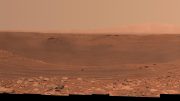

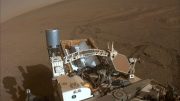

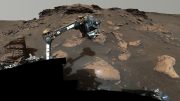
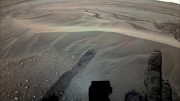

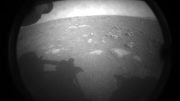
“NASA Gives a Name to Every Spot It Studies on Mars”
And, sometimes they are unpronounceable to those whose only language is English.
Whose fault is that?
I didn’t say it was anyone’s fault. However, now that you have brought it up, it seems that the responsibility for naming belongs to NASA. The question becomes, is the purpose of naming to have common, easily understood associations between recognizable, pronounceable words and landmarks, or does NASA have a responsibility for inclusivity and advancing cultural recognition? I don’t remember seeing that in the original NASA charter. Considering that English is the de facto language of science, and the missions to Mars are primarily missions of discovery of the geology, I’m not clear on how incorporating names that aren’t even from languages derived from Latin, and are only easily spoken and remembered by a small minority that speak the particular dialect, contributes to communication among those most directly involved with and interested in the discoveries. Perhaps you could explain just what such names bring to the table.